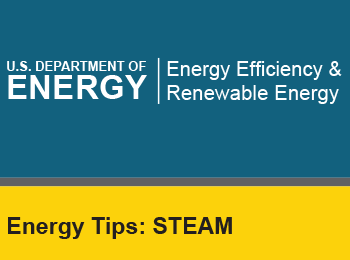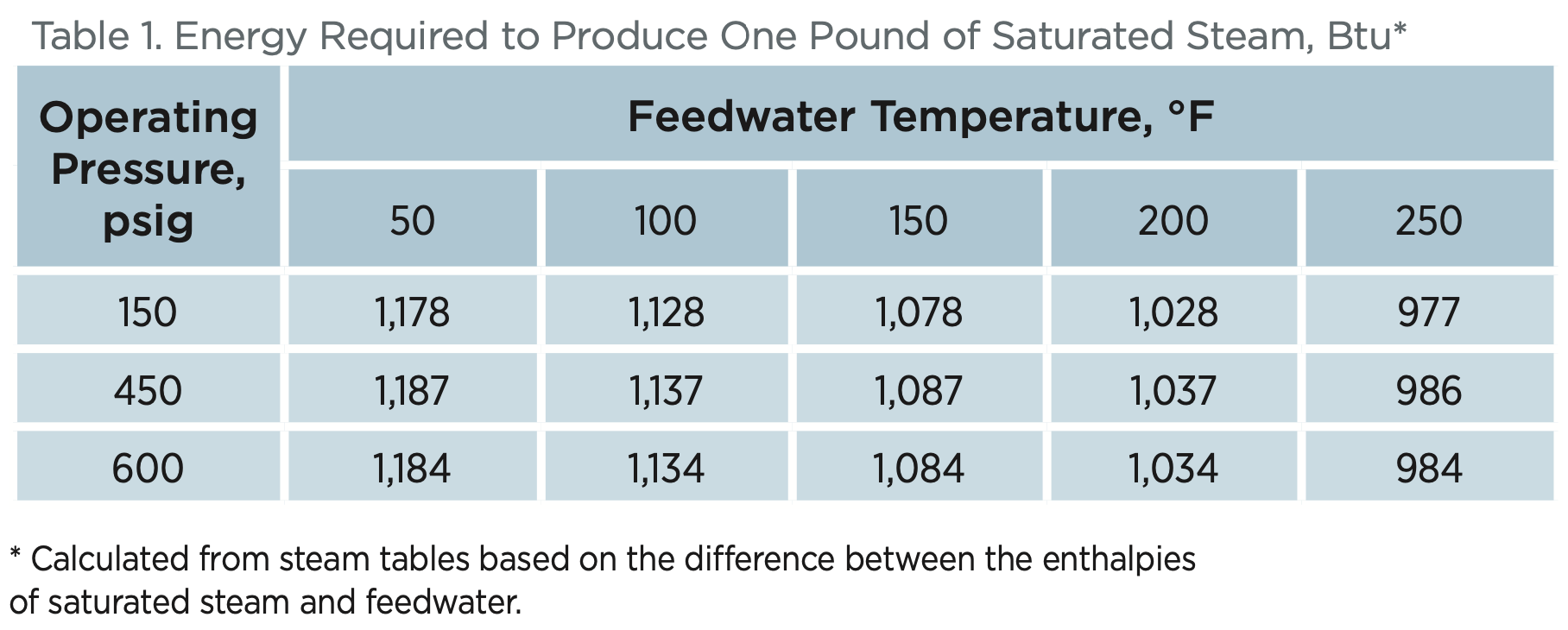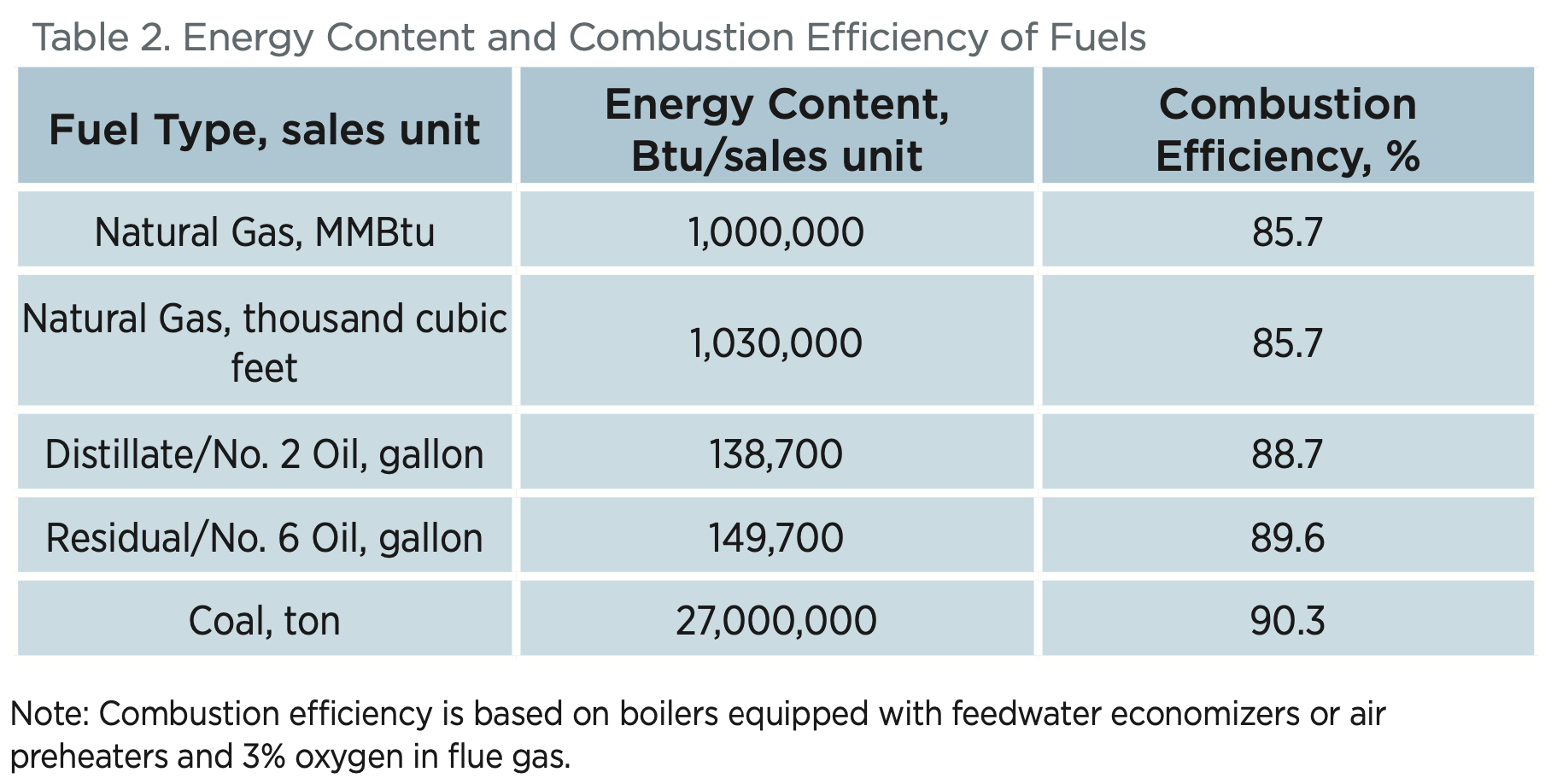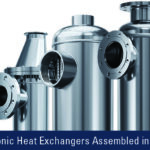
Benchmarking the fuel cost of steam generation, in dollars per 1,000 pounds ($/1,000 lbs) of steam, is an effective way to assess the efficiency of your steam system
Source: U.S. Dept. of Energy, Benchmark the Fuel Cost of Steam Generation
The cost of steam is dependent on fuel type, unit fuel cost, boiler efficiency, feedwater temperature and steam pressure. This calculation provides a good first approximation for the cost of generating steam and serves as a tracking device to allow for boiler performance monitoring.
Table 1 shows the heat input required to produce 1 lb of saturated steam at different operating pressures and varying feedwater temperatures. Table 2 lists the typical energy content and boiler combustion efficiency for several common fuels.


Data from the tables above can be used to determine the cost of usable heat from a boiler or other combustion unit. The calculations can also include the operating costs of accessories such as feedwater pumps, fans, fuel heaters, steam for fuel atomizers and soot blowing, treatment chemicals and environmental and maintenance costs.
Example
A boiler fired with natural gas costing $8.00MMBtu produces 450-pounds-per-square-inch-gauge (psig) saturated steam and is supplied with 230°F feedwater. Using values from the tables, calculate the fuel cost of producing steam.
Steam Cost = ($8.00/MMBtu/106 Btu/MMBtu) x 1,000 lbs x 1,006 (Btu/lb)/0.857
= $9.39/1,000 lbs
Effective Cost of Steam
The effective cost of steam depends on the path it follows from the boiler to the point of use. Take a systems approach and consider the entire boiler island, including effect of blowdown, parasitic steam consumption and deaeration. Further complications arise because of the effects of process steam loads at different pressures, multiple boilers and waste heat recovery systems. To determine the effective cost of steam, use a combined heat and power simulation model that includes all the significant effects.
Multi-Fuel Capability
For multi-fuel capability boilers, take advantage of the volatility in fuel prices by periodically analyzing the steam generation cost, and use the fuel that provides the lowest steam generation cost.
Higher Versus Lower Heating Values
Fuel is sold based on its gross or higher heating value (HHV). If, at the end of the combustion process, water remains in the form of vapor, the HHV must be reduced by the latent heat of vaporization of water. This reduced value is known as the lower heating value (LHV).
Resources
U.S. Department of Energy DOE Software: The Steam System Assessment Tool and The Steam System Scoping Tool. Note, these tools can help you evaluate and identify steam system improvements. In addition, refer to Improving Steam System Performance: A Sourcebook for Industry for more information on steam system efficiency opportunities.
Visit the DOE Advanced Manufacturing Office to access these and other industrial efficiency resources.
Note, Electric load is not added to the U.S. Dept. of Energy Tip Sheet. Please contact the R.F. MacDonald Co. Central Engineering Dept. to determine your electrical cost at 714-257-0900.





